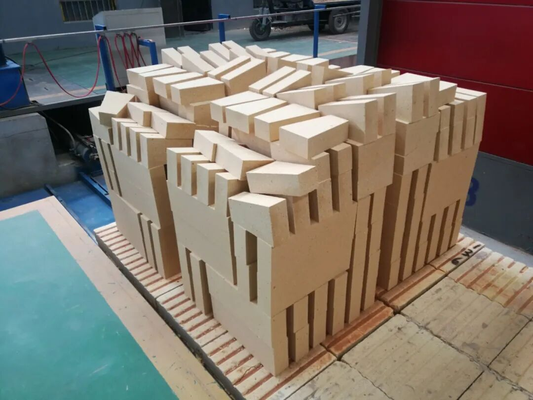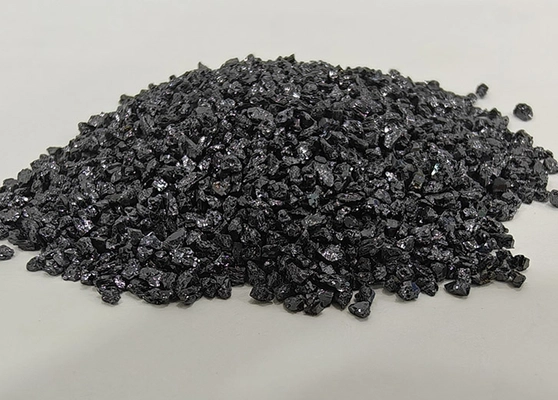Quick Answer: Refractory bricks—also called fire bricks or kiln bricks—are heat-resistant materials made primarily from alumina, silica, fire clay, and sometimes silicon carbide or zirconia. They line furnaces, kilns, incinerators, and reactors to withstand extreme temperatures above 1,500 °C while maintaining mechanical strength and insulation.
Table of Contents
- 1. What Are Refractory Bricks?
- 2. What Are Refractory Bricks Made Of?
- 3. Main Types of Refractory Bricks
- 4. Industrial Applications
- 5. Cost and Price Factors
- 6. Refractory Brickwork and Installation
- 7. FAQ
1. What Are Refractory Bricks?

Refractory bricks, often known as fire bricks or kiln bricks, are ceramic materials capable of withstanding extremely high temperatures, chemical attack, and mechanical stress. They are essential in lining industrial furnaces, kilns, incinerators, and reactors where structural integrity and thermal efficiency are critical.
Compared with conventional building bricks, refractory fire bricks contain fewer impurities such as alkalis and iron oxide, providing excellent thermal shock resistance and dimensional stability even at temperatures exceeding 1700 °C.
2. What Are Refractory Bricks Made Of?
The composition of a firebrick determines its performance. Common fire brick materials include:
- Fire clay: The basic ingredient in most refractory bricks, rich in alumina (Al₂O₃) and silica (SiO₂).
- High-alumina: Contains 50–90 % alumina; used in high-temperature zones of furnaces.
- Silica bricks: More than 93 % SiO₂, ideal for coke ovens and glass furnaces.
- Magnesia bricks: Based on MgO, excellent in basic slags environments such as steelmaking.
- Silicon carbide (SiC) bricks: Offer outstanding thermal conductivity and erosion resistance.
- Chromite or zircon bricks: For applications requiring extreme corrosion and abrasion resistance.
So, what are kiln bricks made of? Depending on operating temperature and chemical environment, manufacturers blend these raw materials to achieve specific performance targets.
3. Main Types of Refractory Bricks
Refractory bricks can be categorized by composition, manufacturing method, or function:
3.1 Fire Clay Bricks
Made from natural fire clay with 30–40 % alumina, these fireclay refractory bricks are used in domestic fireplaces, pottery kilns, and small furnaces. They offer moderate refractoriness (up to 1,750 °C) and good volume stability.
3.2 High-Alumina Bricks
Composed of calcined bauxite or synthetic alumina, high-temperature refractory bricks with 60–90 % Al₂O₃ exhibit excellent strength and corrosion resistance. They are ideal for steel ladles, cement kilns, and electric-arc furnaces.
3.3 Silica Bricks
Containing over 93 % SiO₂, silica refractory bricks maintain rigidity at elevated temperatures and are commonly used in glass tanks and coke ovens. They resist acidic slags but not basic ones.
3.4 Magnesia and Magnesia-Chrome Bricks
These basic refractory bricks are composed mainly of MgO and resist attack from basic slags. They line basic oxygen furnaces (BOF) and non-ferrous metal converters.
3.5 Silicon Carbide Refractory Bricks
Silicon carbide (SiC) provides outstanding thermal conductivity, oxidation resistance, and mechanical strength. These ceramic refractory bricks are widely used in waste incineration, glass furnaces, and aluminum processing furnaces.
3.6 Insulating Fire Bricks (IFB)
Lightweight refractory blocks designed for insulation layers. They minimize heat loss and reduce fuel consumption in furnaces and kilns.
3.7 Special Refractory Blocks
Large refractory blocks or shapes are custom-designed for furnaces, ladles, and ducts, often pre-formed to fit complex geometries.
4. Industrial Applications
- Metallurgy: Furnace refractory bricks line blast furnaces, converters, and ladles.
- Cement industry: Firebrick refractory linings protect rotary kilns and coolers.
- Glass manufacturing: Silica and SiC bricks resist high heat and corrosive vapors.
- Ceramics: Fire clay bricks used in kiln walls and shelves.
- Power generation: High-alumina refractory bricks in boilers and incinerators.
5. Cost and Price Factors
The cost of refractory bricks varies depending on composition, density, and manufacturing process. Indicative price factors:
- Fire clay bricks: US $300 – $500 / ton
- High-alumina bricks: US $600 – $1,000 / ton
- Silicon carbide bricks: US $1,200 – $2,000 / ton
- Magnesia bricks: US $700 – $1,200 / ton
Prices also depend on shape complexity, quantity, shipping cost, and certification (ISO, ASTM, JIS). For bulk users, many suppliers offer refractory bricks for sale with customized sizing and bonding options.
6. Refractory Brickwork and Installation
Proper refractory brickwork ensures structural stability and thermal efficiency. Common bonding methods include fireclay mortar, phosphate bonding, or chemical setting cements. In high-temperature furnaces, expansion joints are necessary to accommodate thermal growth. Maintenance involves periodic inspection for spalling, cracking, or erosion.
7. FAQ on Firebrick and Refractory Materials
Q1. What is firebrick made of?
Firebrick is primarily composed of alumina and silica derived from fire clay. Additional minerals such as SiC or zircon may be added for enhanced resistance.
Q2. What are refractory bricks made of?
Depending on the type, refractory bricks can include alumina, silica, magnesia, silicon carbide, or zirconia as the main component.
Q3. What is a fire brick furnace?
A fire brick furnace uses refractory linings to contain and reflect heat efficiently, protecting the furnace shell from extreme temperatures.
Q4. Are ceramic refractory bricks and fireclay refractory bricks the same?
Both belong to the ceramic category, but fireclay bricks are a specific type of aluminosilicate ceramic refractory.
Q5. How to choose refractory bricks for sale?
Consider maximum service temperature, atmosphere (oxidizing/reducing), chemical exposure, and mechanical load. Suppliers can recommend appropriate grades and bonding systems.
Request a Quote or Sample
Popular Products
Grünes Siliziumkarbid
View DetailsSchwarzes Siliziumkarbid
View Details